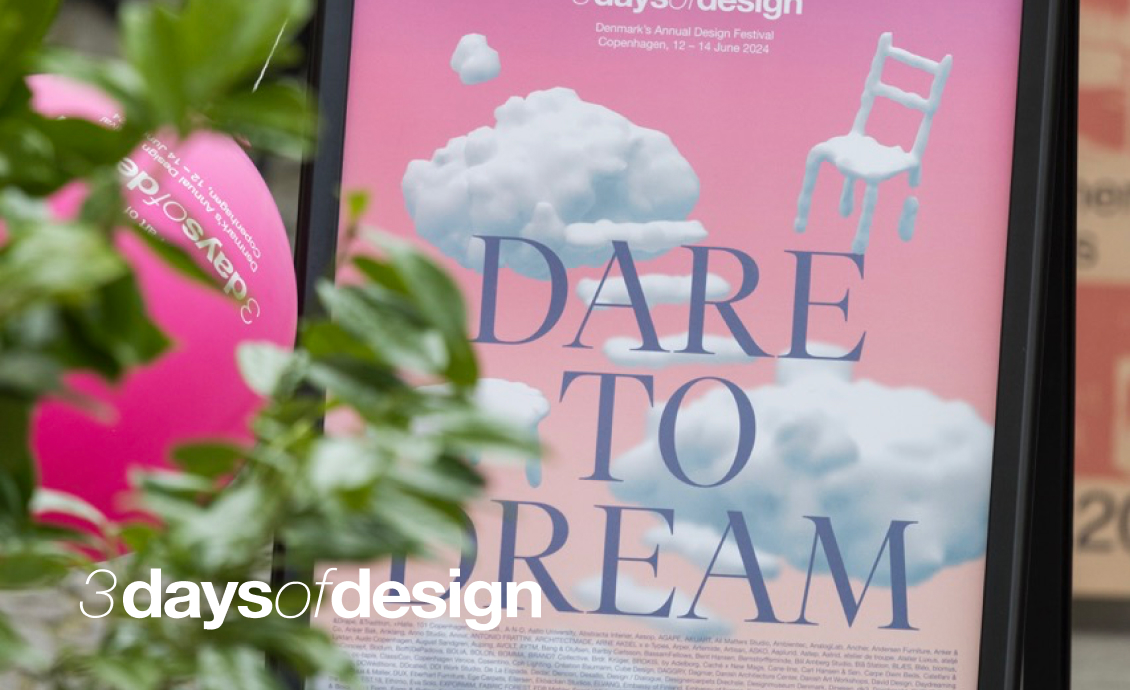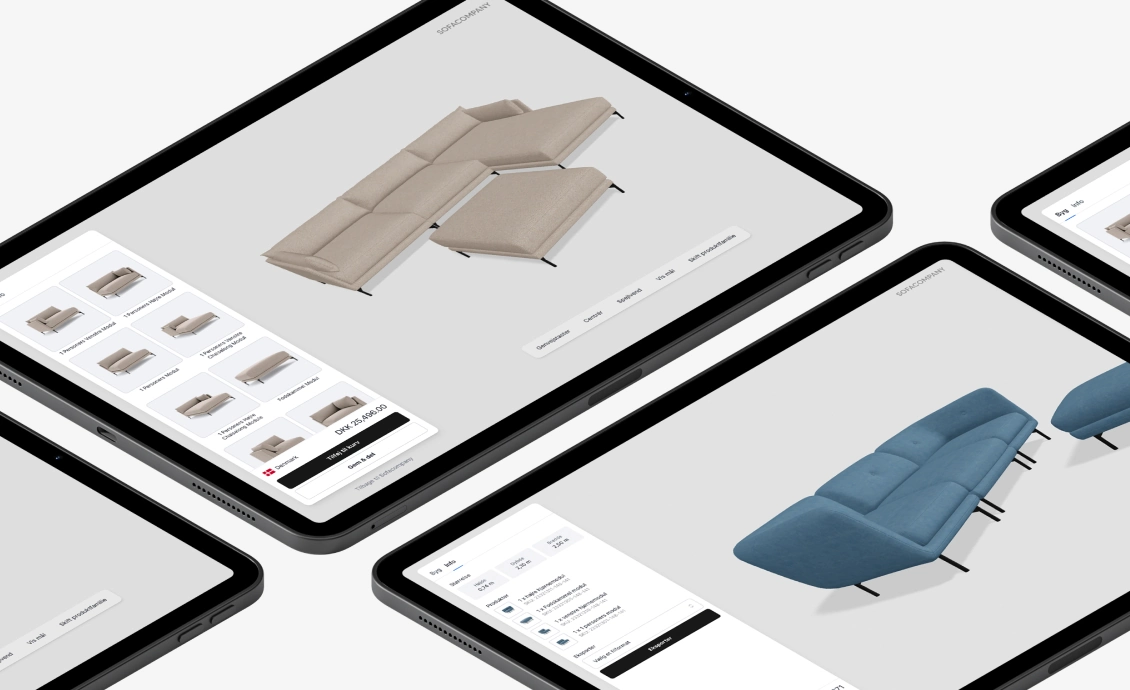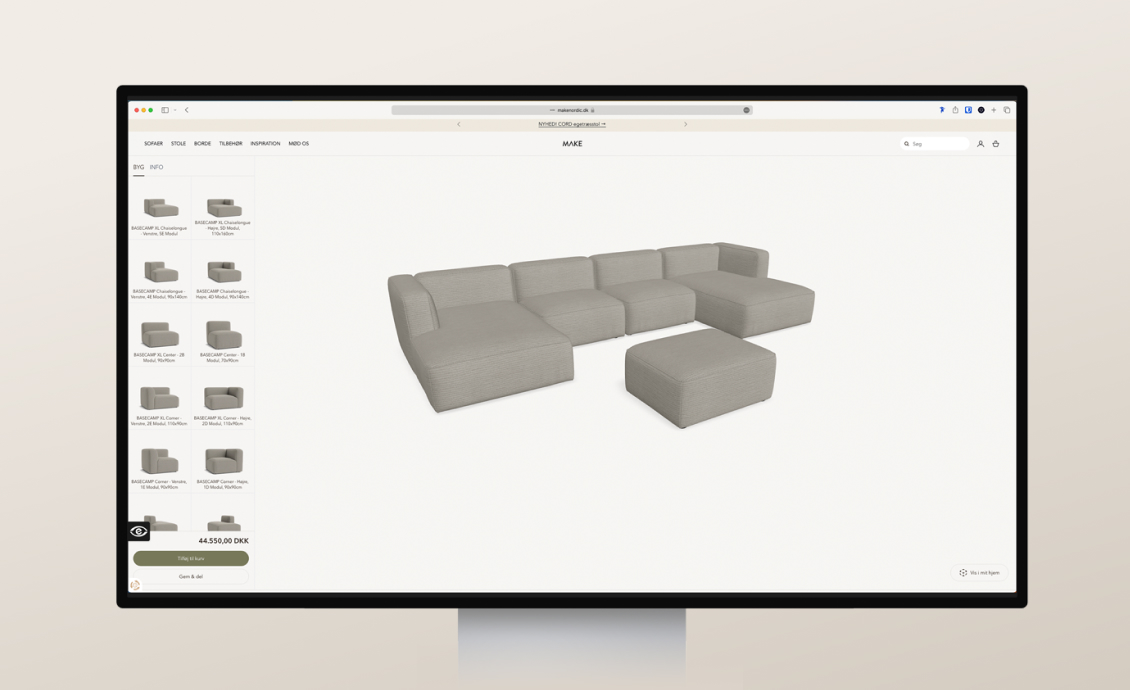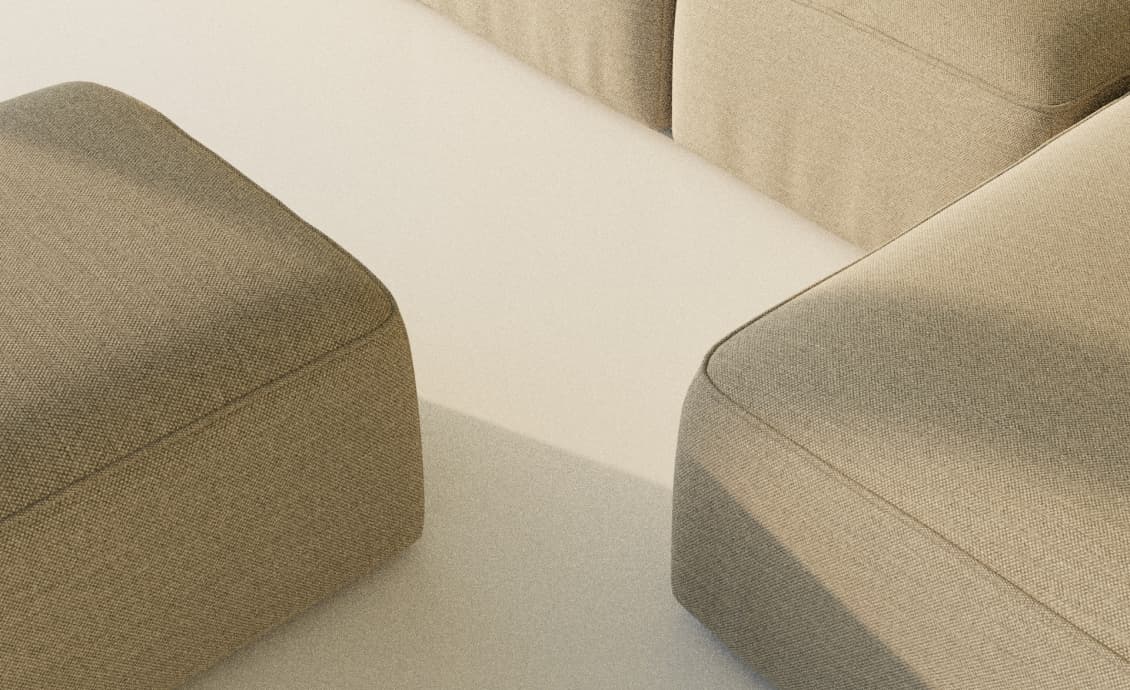
6 Trends in furniture Retail – bring your customers closer to an In-store Experience
1. Shoppable images
Shoppable images are a revolutionary e-commerce feature that brings the in-store experience to the digital realm. It allows customers to interact with products directly within the visuals they are viewing. These images contain embedded links, enabling users to click on items they’re interested in and be taken straight to a page where they can view details and make a purchase.
The IKEA Example
IKEA is at the forefront of utilizing shoppable images, transforming their digital catalogs into interactive shopping experiences. As customers peruse through IKEA’s stylized room designs, each product is a potential click away from learning more or adding to their cart, streamlining the journey from inspiration to acquisition.
The Impact on Customer Experience
The introduction of shoppable images has substantially refined the online shopping experience, aligning with the consumer’s desire for immediacy and convenience. It bridges the gap between seeing and buying, reducing the steps a customer must take to finalize a purchase, which can positively affect the retailer’s conversion rates.
This innovative feature aligns perfectly with recent statistics, which show that 75% of consumers rely on product imagery to inform their purchase decisions. By integrating these clickable links, retailers can significantly enhance the online shopping experience, potentially increasing conversion rates by catering to the visual preferences of their customers.
The Future of Online Retail
Shoppable images signify a shift towards a more interactive and integrated online retail environment. They exemplify how retailers can innovate to keep pace with evolving consumer expectations, providing a more engaging, efficient, and satisfying shopping experience.

2. Augmented reality
The advent of Augmented Reality (AR) is revolutionizing the retail sector by providing immersive and interactive shopping experiences that merge the digital and physical worlds.
The power of visualization
AR technology enables consumers to visualize products in their actual environment before purchasing. This “try before you buy” feature has been a game-changer, particularly for home decor and fashion industries.
The effectiveness of AR is evident in the numbers. Reports indicate that AR can boost conversion rates by up to 40% as it helps consumers make more informed decisions. Additionally, engagement rates are also higher, with users spending more time interacting with products that have AR features.
AR in Action: Muuto’s Virtual Showroom
Muuto leverages AR technology to enable customers to place life-sized models of furniture in their own homes with just a few clicks on their smartphones. This allows for a “try before you buy” experience, ensuring the piece fits perfectly in the intended space, both in size and style.
You can try out Muuto’s AR functionality here, seeing for yourself how their design pieces can transform your environment.
Embracing AR for the Future
AR is swiftly moving from a novel feature to a central component of the online shopping experience. As more customers seek out interactive and confident buying journeys, AR stands out as a crucial tool in bridging the gap between digital browsing and the physical world.

3. 3D configurators: Customization Made Simple
In today’s digital marketplace, personalization is more than a luxury – it’s an expectation. 3D configurators are at the forefront of meeting this demand, offering customers a unique and interactive way to tailor products to their exact preferences. This technology allows for real-time customization, from color choices to design features, providing a deep level of engagement and a sense of ownership over the creation process.
The Planner Studio’s Role
At the Planner Studio, we understand the importance of bridging the gap between complex technology and user-friendly experiences. Our state-of-the-art 3D configurators are designed with the user in mind, ensuring an intuitive and seamless journey from visualization to realization. Whether it’s furniture, fashion, or any customizable product, our tools are adaptable to a myriad of industries.
Enhancing the In-Store Experience Digitally
Our configurators don’t just replicate the in-store experience; they elevate it. By incorporating detailed visuals and easy-to-navigate interfaces, The Planner Studio’s configurators provide a level of detail and immersion that rivals, and often surpasses, the physical showroom experience. This technology allows customers to see their creations come to life in their own space, offering a tangible sense of the product before the purchase.
Streamlining for Businesses
For businesses, The Planner Studio’s configurators are more than just a customer-facing tool. They are a means to gather valuable insights into customers preferences, aiding in product development and targeted marketing. Our configurators also help reduce the likelihood of returns by ensuring customers have a clear and accurate understanding of what they are purchasing, thereby enhancing overall customer satisfaction and loyalty.
The Planner Studio’s 3D configurators are more than just a feature – it’s a comprehensive solution for businesses looking to stay ahead in the evolving landscape of digital retail, offering a unique blend of technical sophistication and user-centric design.
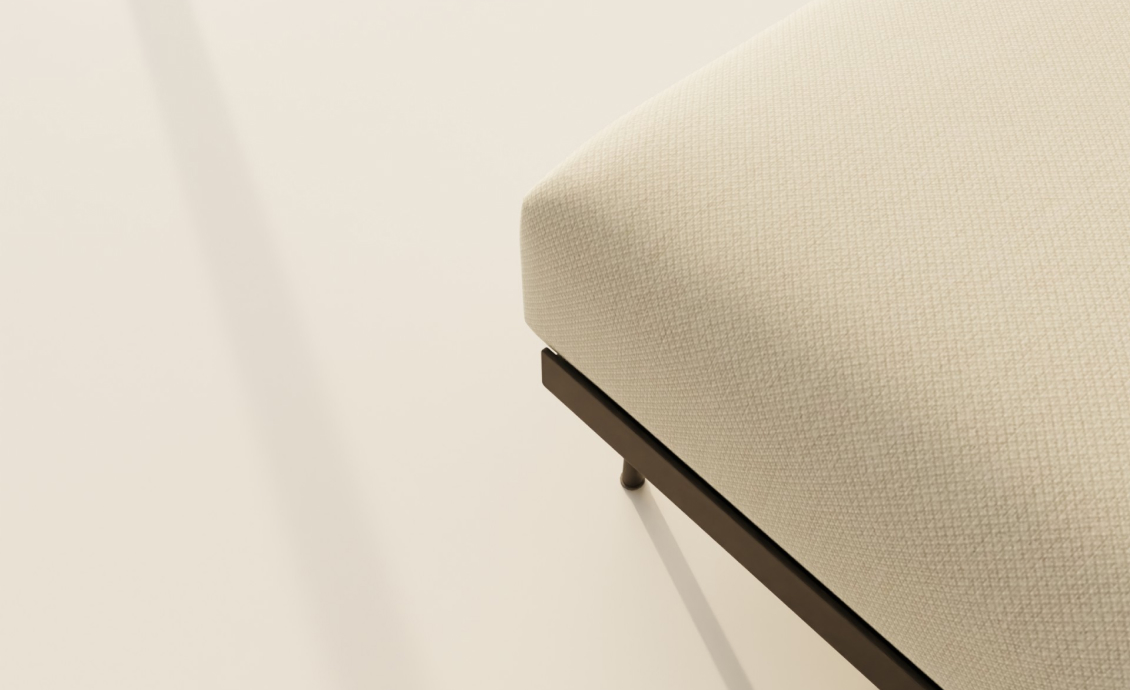
4. Omnichannel Strategy: Consistent Brand Presence Across Platforms
You’ve probably heard it countless times before, but the importance of a streamlined omnichannel approach cannot be overstated. It’s the cornerstone of modern retail, ensuring that the unique essence of your brand resonates consistently across all customer touchpoints.
Consistency is Key
The In-Store Feel, online: In an omnichannel strategy, your physical store’s ambiance should be mirrored on your website and social media. If there’s something special you do in-store – perhaps a unique way you display products or engage with customers – these elements should be replicated online to create a cohesive brand story.
Digital integration
From Physical to Digital: Integrate the tangible aspects of your store into your digital platforms. Use high-quality imagery, virtual tours, or interactive elements to give online shoppers the same warm and personal feeling they get when they walk into your brick-and-mortar location.
Social Media Synchronization
Harmonizing channels: Your social media should not feel like an afterthought. Instead, it should be an extension of your brand’s narrative. Whether it’s through style, tone, or customer interaction, the core identity of your brand should be unmistakable and engaging, offering a familiar touch to those who switch between channels.
The Omnichannel Advantage
Bridging the Gap: A well-executed omnichannel strategy blurs the lines between an in-store visit and an online shopping experience. It’s about creating a seamless transition for customers as they move from looking at a product in-store to researching it online, and finally, to making a purchase on their preferred platform.
By unifying the customer experience across all channels, you not only reinforce your brand identity but also foster a stronger, more trusting relationship with your customers. This holistic approach is what turns first-time visitors into lifelong patrons.

5. Interactive Content that Mirrors the In-Store experience
Creating an online environment that reflects the personal touch of an in-store visit is pivotal for today’s digital consumer. Interactive content plays a critical role in bridging this gap, offering a bespoke shopping journey that resonates with the in-person experience.
Personal Shopper Quiz
Discover Their Desires: Just as a skilled sales associate would discern your preferences through conversation, an online quiz can guide customers to their ideal products. By asking targeted questions like “Do you prefer a chaise lounge or modular furniture?” you can mimic the in-store experience of uncovering customer needs and suggesting tailored solutions.
Digital Showroom
A Virtual Walkthrough: Digital catalogs come to life when customers can interact with them. Imagine the ability to hover over a sofa in a digital showroom and see the various available colors and configurations, just like if they were exploring options in a physical store.
Relationship Building
Connect Through Content: Beyond just a sales tool, interactive content fosters a relationship. When customers engage with quizzes or digital walkthroughs, they’re not just shopping; they’re communicating their preferences and building a connection with your brand.
The End Goal
Seamless Shopping Experience: The aim is to make the online shopping journey as intuitive and engaging as an in-store visit. With interactive content, customers should feel that they are not just visiting a website but stepping into your store, being greeted by helpful staff, and walking out with exactly what they were looking for.
6. Engaging Customers with Live Streaming and Interactive Webinars
In the digital era, especially post-COVID, live streaming and webinars have emerged as powerful tools for retailers to connect with their audience, showcase products, and create a dynamic shopping experience.
The Rise of Live Retail
Live Streaming: Unveiling New Products Online: Live streaming has transformed the way brands introduce their newest collections, bringing the excitement and immediacy of a physical launch event into the digital realm. This dynamic approach enables customers to view and experience new products in real time. It’s a powerful method to showcase the latest offerings, engaging customers with a fresh, interactive, and direct perspective, much like attending an in-store event.
Interactive Engagement
Two-Way Communication: Unlike traditional videos, live streaming and webinars offer a unique opportunity for interaction. Viewers can ask questions, provide immediate feedback, and even influence the content in real-time. This interaction mimics the personal attention they would receive in-store.
Beyond Just Viewing
Webinars as Educational Tools: Retailers are not just selling products; they’re educating their audience about their brand and values. Webinars can be used to delve deeper into product details, usage tips, or even behind-the-scenes looks, offering insights that go beyond typical marketing materials.
Live streaming and webinars bridge the gap between online shopping and the in-store experience- They provide an immersive and interactive platform, allowing customers not just to view but to engage and connect with brands in a meaningful way.
Wrapping up our journey through “6 Trends that Bring Your Customers Closer to an In-Store Experience”, remember that the Planner Studio is here to help. For expert guidance or to integrate a top-notch 3D configurator into your digital strategy, reach out to us. We’re here to help you bridge the gap between the virtual and the physical, enhancing your customers’ online shopping experience. Let’s make your digital storefront as engaging and personalized as your physical one!


